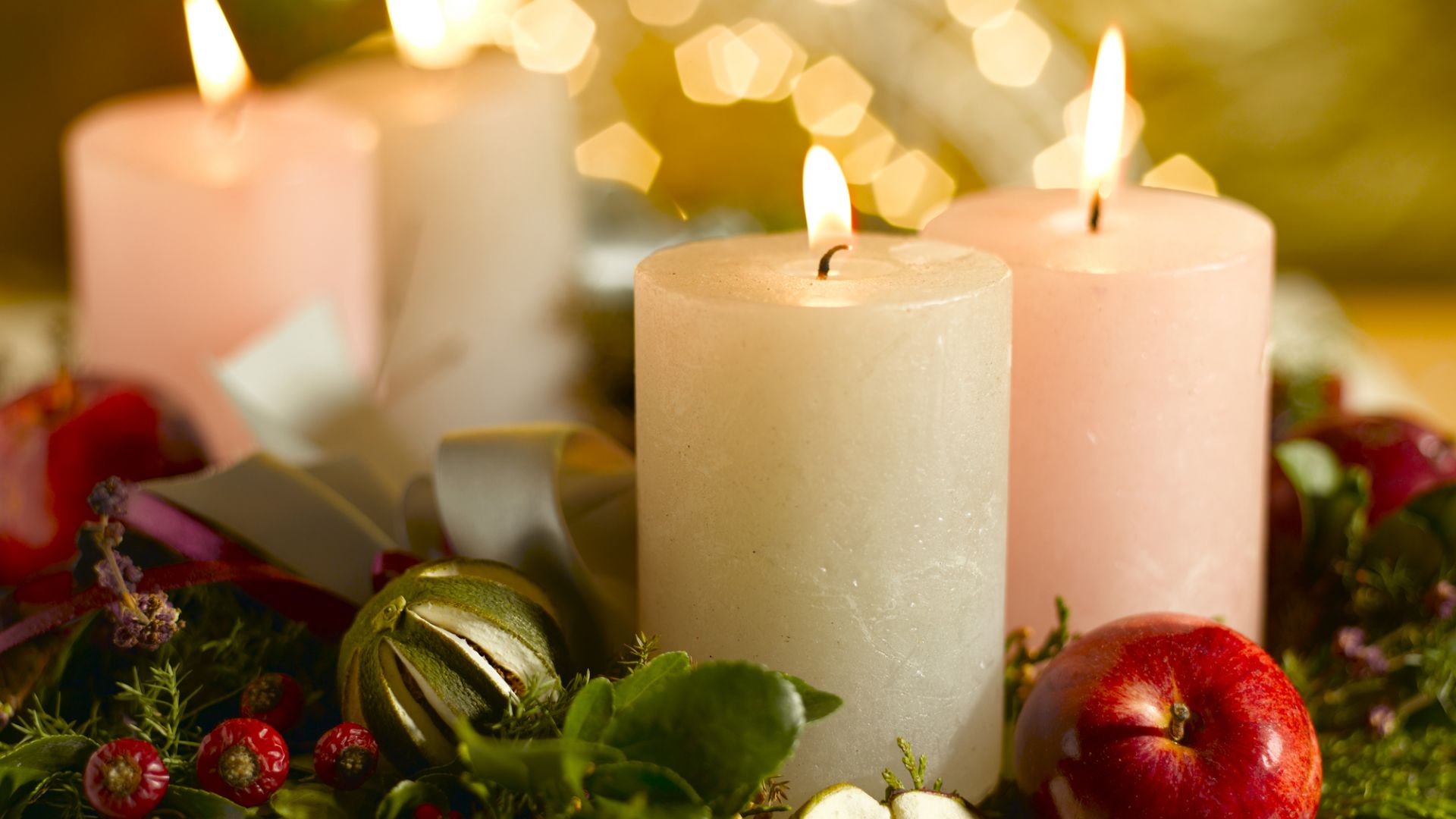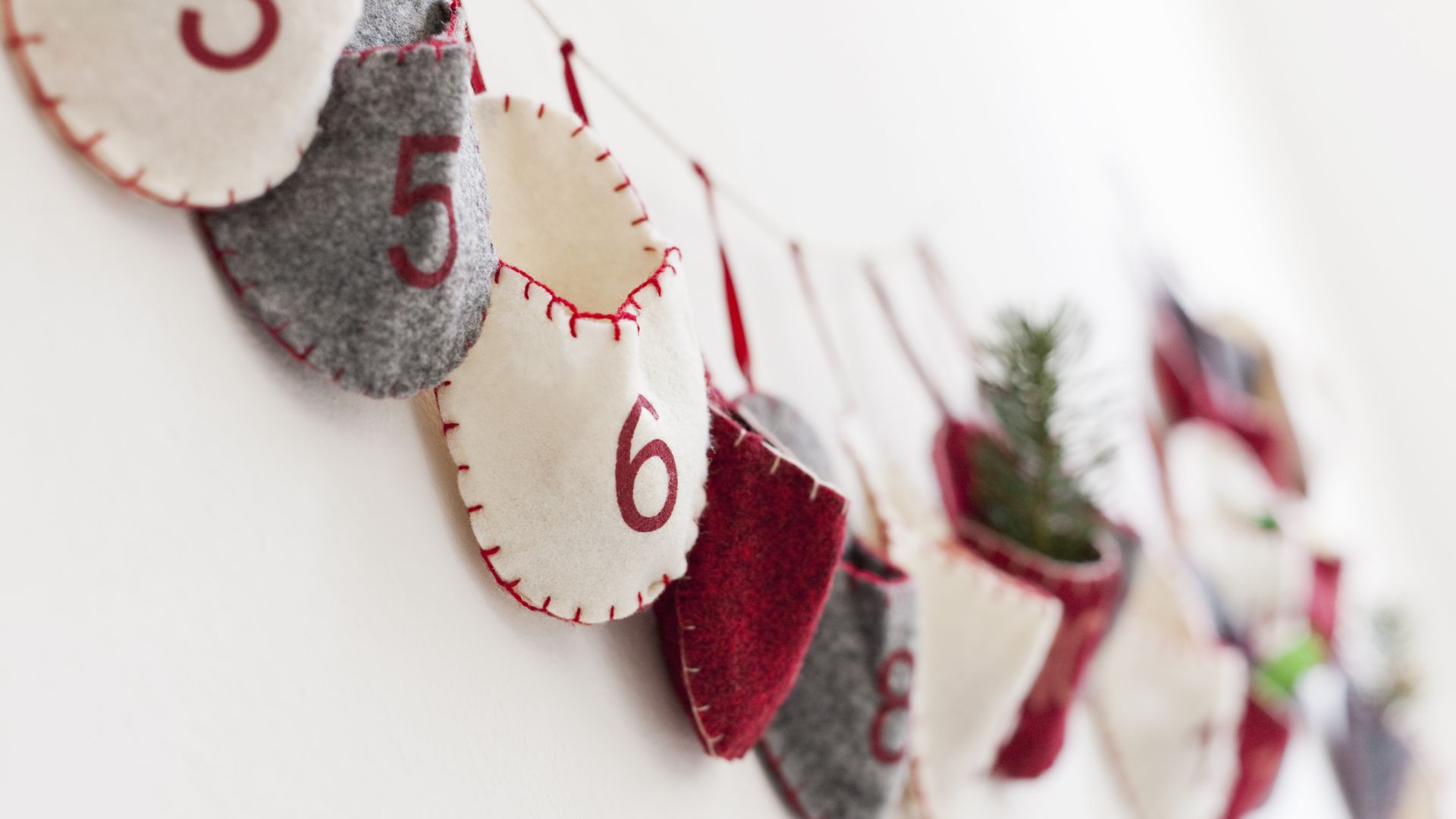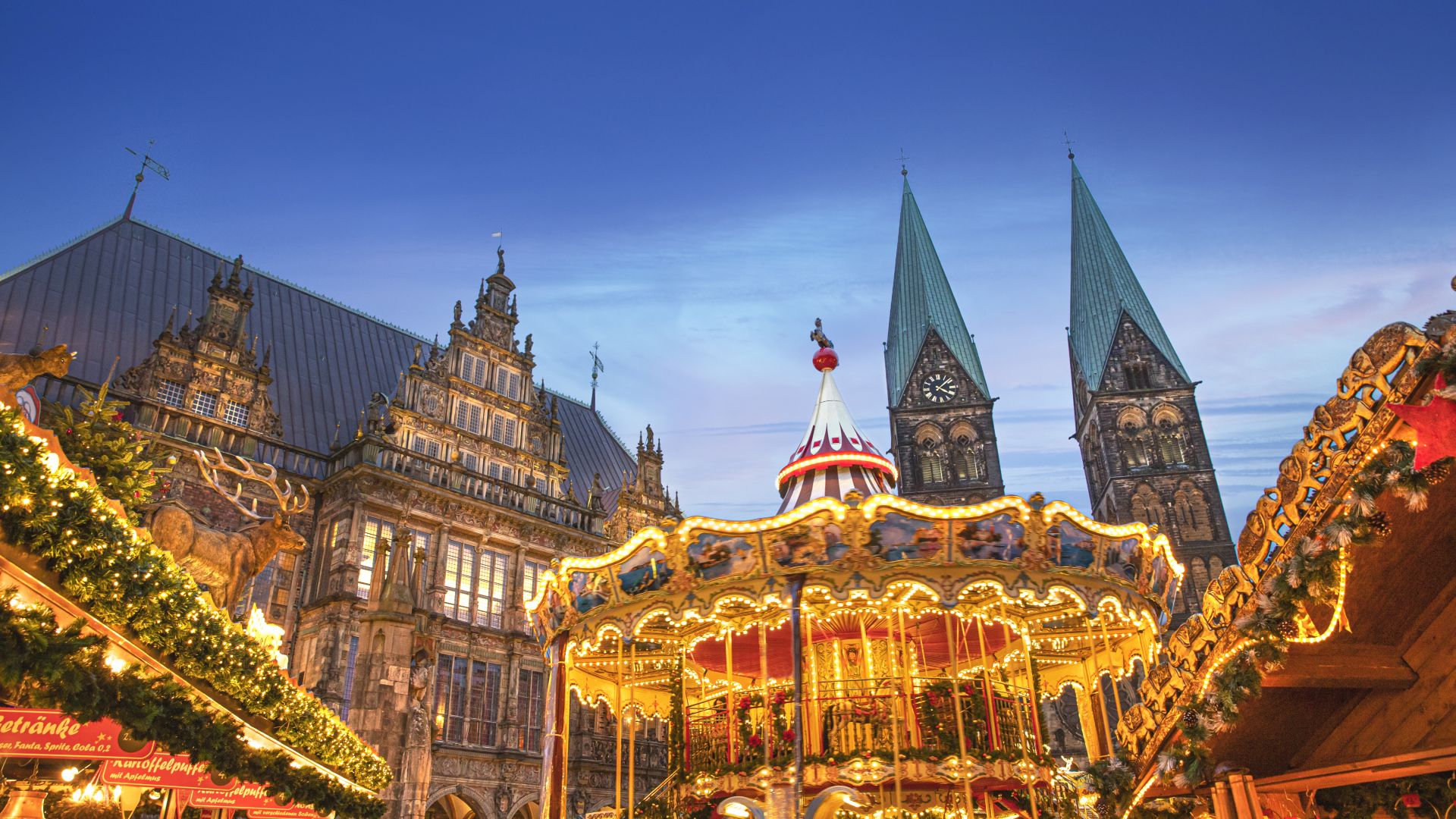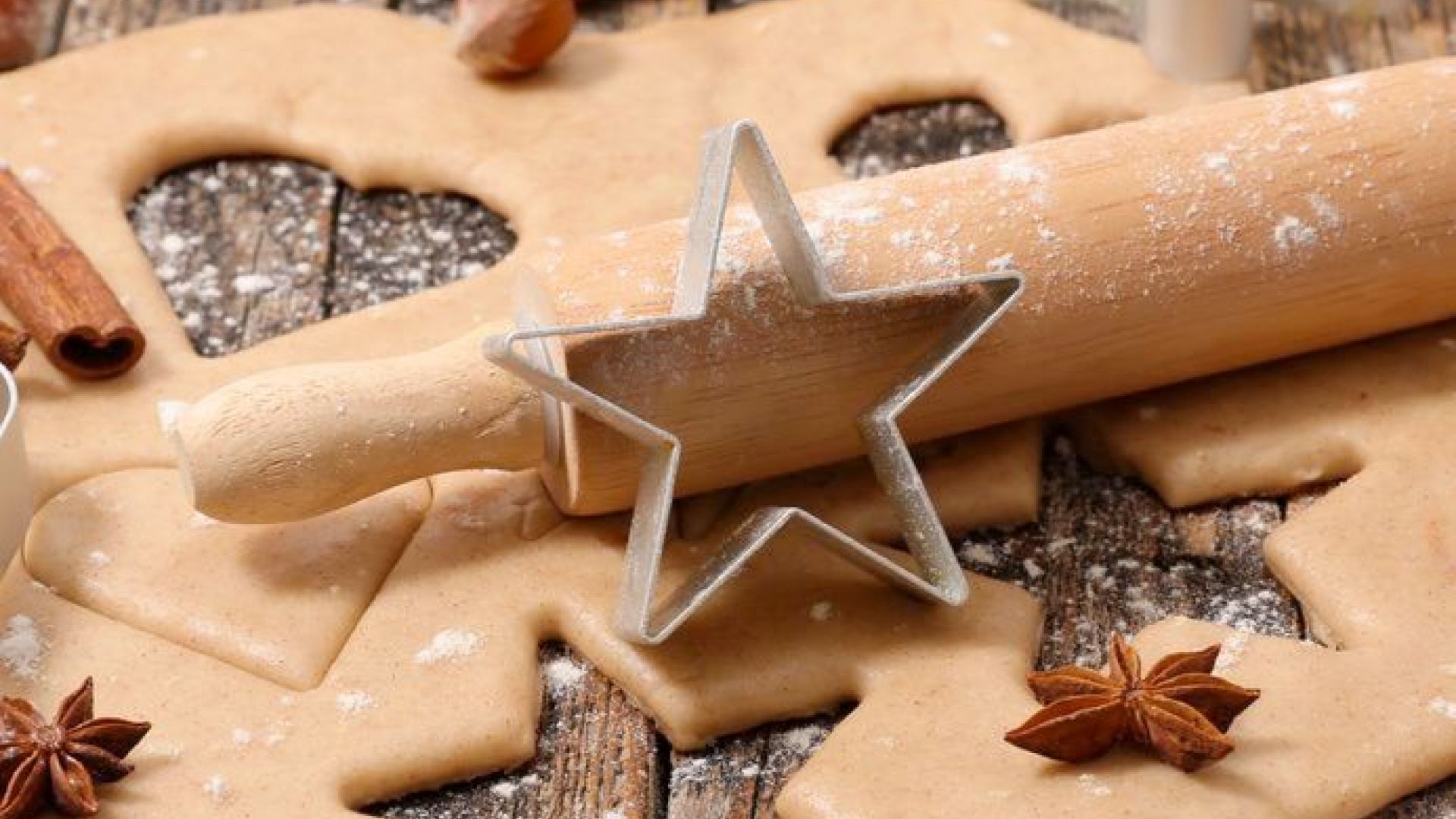Cities & Culture
Romantic Advent: Christmas cookies, Advent calendars, Saint Nicholas and Christmas markets
When a thick blanket of snow covers the country, lights sparkle on Christmas trees and the air is filled with aromas of cloves and cinnamon, the festive season has arrived. From baking cookies to making Christmas decorations or singing songs: Germany's many Christmas traditions create a very special atmosphere in December and help children in particular to pass the long days until Christmas Eve when the 'Christkind' or Father Christmas delivers their presents.
Many regional traditions characterize the time before Christmas in Germany. In Saxony, for example, "miners" in traditional dress walk through the streets during Advent in memory of the mining era. In the Upper Palatinate, on the other hand, a blessed image of the Virgin Mary is passed from house to house during the Christmas season until it returns to the church on December 24. But the whole country agrees on one thing. Advent, with its very special magic, the flickering candles in the long winter nights, the enticing scents of mulled wine and freshly baked cookies, and the atmospheric carols that resound from churches and at markets, is one of the most beautiful times of the year.
Advent wreath: And when the fourth candle burns...
 Advent wreath with burning candles
©gettyimages (gzorgz)
Advent wreath with burning candles
©gettyimages (gzorgz)
As one of the German rhymes recited by children during the Advent period goes: "Advent, Advent, a little light is burning. "First one, then two, then three, then four, then Father Christmas is at the door". Children can barely contain their impatience for the fourth Sunday of Advent to arrive, when all four candles are finally lit on the wreath of fir branches and Christmas is almost here.
The Advent wreath has a tradition of almost 200 years in Germany. Originally, there was a candle on the Advent wreath for each day of the week in Advent, so that it was easy to count how many days were left until Christmas Eve. Today there are only four candles and every Sunday in Advent another candle is lit on the Advent wreath.
Advent calendar: 24 little doors until Christmas Eve
 Advent calendar on the wall
©gettyimages (Nils Hendrik Müller)
Advent calendar on the wall
©gettyimages (Nils Hendrik Müller)
In Germany, an Advent calendar is an essential part of the festivities, along with mulled wine and cookies. The preparations start promptly at the end of November, as the calendar and its 24 little surprises need to be ready by 1st December. The principle is simple: a little gift every day to ease the wait until Christmas Eve. Advent calendars come in all shapes and sizes. Many have little doors concealing colourful little pictures or sweet treats. Even today, many Advent calendars are still lovingly made by hand. Twenty-four little pouches or packages are then hidden inside, containing specially chosen mini-presents for loved ones. An Advent calendar is an essential part of the festive season for children, and many adults also enjoy this lovely tradition.
This is where things get Christmassy: Christmas Markets
 Bremen: Christmas Market on the Market Square
©WFB Bremen (WFB Carina Tank)
Bremen: Christmas Market on the Market Square
©WFB Bremen (WFB Carina Tank)
The Christmas markets that start opening late November are a highlight for young and old alike, inviting you to take an atmospheric stroll through the alleys with festively decorated stalls. If you feel hungry, you can snack on gingerbread, candy apples, Christmas stollen and hot chestnuts. Wooden carvings from the Erzgebirge, artistic glass baubles or handmade unique items from the region are on offer as Christmas decorations or sustainable Christmas gifts for loved ones.
Shoes outside the door: Saint Nicholas is bringing apples, nuts and sweets
 girl looking out the window on Christmas
©gettyimages (CLM Images)
girl looking out the window on Christmas
©gettyimages (CLM Images)
Christmas is the main celebration at the end of the year in Germany. But another very popular tradition takes place a little earlier: St Nicholas Day on 6th December. The night before, children – and many grown-ups – place their polished shoes or boots outside the front door. According to legend, Saint Nicholas then passes by during the night and fills them with sweets, nuts, tangerines and little presents. The character is said to be inspired by Saint Nicholas, a bishop who lived in the Turkish city of Myra in the 4th century. This lovely tradition continues in his name, making children jump out of their beds on the morning of 6th December. They race to the door to see whether Saint Nicholas has called during the night with his sack of sweets and rewarded them generously.
December for foodies: cookies, stollen cake and gingerbread
 baking christmas cookies
©Fotolia (M.Studio #122266475 (jetzt bei: https://de.stockfresh.com/image/7396692/baking-christmas-gingerbread))
baking christmas cookies
©Fotolia (M.Studio #122266475 (jetzt bei: https://de.stockfresh.com/image/7396692/baking-christmas-gingerbread))
Advent is a time for indulging. The sweet treats start in early December with freshly baked cookies. Children have great fun kneading dough, cutting out cookies in festive shapes and decorating them with colourful icing, almonds or sweet pearls. Iced cinnamon stars, spicy ginger biscuits and sweet powdered vanilla croissants are particularly popular. Another sweet treat traditionally enjoyed over the festive season in Germany is Christmas stollen, baked according to different family recipes but usually using yeast dough, butter, raisins and nuts. The reputation of Dresden Christmas stollen, baked according to a special recipe since the 15th century, has spread all over the world. German Christmas biscuits are also very popular around the world. The little gingerbread 'Lebkuchen', and especially the 'Nuremberg Lebkuchen', are enjoyed in many countries. Not forgetting Aachen's moist 'Printen' gingerbread and Lübeck's delicious, beautifully soft marzipan.
Learn more on our campaign page.
Winter and Christmas
Close your eyes and let yourself be acoustically enchanted by the diverse impressions on your journey through Germany!
Intro with music:
“Experience Germany – A Surprising Journey of Discovery”
INTRO
In the run-up to Christmas, the smell of roasted almonds, gingerbread and mulled wine is found everywhere in Germany. Each city has its own Christmas market. One of the most famous is the Nuremberg Christkindlesmarkt and it is opened by the Christ Child himself, says City Councilor Dr. Michael Fraas.
OST Dr. Michael Fraas, Nuremberg, Bavaria
Man: It is the Friday of the first Advent weekend, it is dark at the main market. All the lights will be turned off, including those in surrounding buildings and stalls. The square is dark. Then a big spotlight comes on, directed at the balcony of the Frauenkirche, and suddenly the Christ Child is standing there in his golden robe and crown and says: “The Christ Child invites you to his market and everyone is welcome.”
And the oldest German Christmas market is actually the Striezelmarkt in Dresden, dating back to 1434. Like Nuremberg with its gingerbread, Dresden’s Christmas market is also associated with a famous pastry, reports Veronika Hiebl of Tourismus Marketing Gesellschaft Sachsen.
OST Veronika Hiebl, Dresden, Saxony
Woman: The Dresden Striezelmarkt and the Dresden Christstollen share a common history, and this history continues to this day, as the Dresden Striezelmarkt owes its name to the traditional pastry originally known as Striezel.
But when it comes to the capital city of Christmas markets, Christian Tänzler of Visit Berlin clearly sees this as the German capital, with more than 50 themed markets ranging from royal to urban.
OST Christian Tänzler, Visit Berlin
Man: We have a Christmas market for dog lovers, for example. Of course, we also have nice things like a children’s Christmas market, a winter camp for the LGBTQI community, we have an old railroad, which is a bit magical and atmospheric in an old locomotive shed. And, what is very, very important in Berlin is the issue of sustainability. We have an organic market at Kollwitz Square. Therefore, everyone can find what they are looking for.
The 17 Christmas markets in “Holy Hamburg” also range from the cheeky and frivolous “Santa Pauli” on the Reeperbahn to maritime Christmas flair, explains Guido Neumann from Hamburg Tourismus.
OST Guido Neumann, Hamburg Tourismus
Man: We have a Christmas market in the Hafencity right on the waterfront, overlooking the harbor, a Christmas market around the Binnenalster lake or there are two Christmas markets on the waterways, on the canals. In addition, there are many things that take place on ships: Christmas fairy tales on steamboats on the Alster river, boat trips and Christmas-themed cruises on the Elbe through the brightly lit harbor.
Grog instead of mulled wine, fish sandwiches instead of the usual bratwurst. But stollen, cookies, Santa Claus, Christmas carols and Advent calendars are also part of the Advent season. According to the Guinness Book of Records, the largest Advent calendar house in the world is located in the Black Forest, according to Oliver Gerhard, spokesman for the town of Gengenbach.
OST Oliver Gelhardt, Gengenbach Advent calendar, Baden-Württemberg
Man: The town hall happens to have 24 windows, and this town hall is illuminated and becomes a giant Advent calendar, and every evening at 6 pm a window opens. The special thing about the Gengenbach Advent calendar is that great artists are always included. We already had paintings by Chagall, by Tomi Ungerer … There is always great art in these windows.
If you want to see the German cities with the most beautiful Christmas decorations through a window, you can book river cruises to romantic winter destinations on the Rhine, Danube or Elbe. From November to March, so-called winter punting trips are also offered on the Spreewald, says Patrick Kastner from Reiseland Brandenburg.
OST Patrick Kastner, Spreewald, Brandenburg
Man: These are unique Winter moments to enjoy snuggled up in a warm wool blanket with mulled wine in hand. You can listen dreamily to stories of the bargemen, who stand at the end and steer the ship almost like a gondola in Venice.
If you travel to Germany’s northernmost tip, you can find fir trees in Freest and on the island of Rügen, which are decorated with apples, potatoes and rose hips instead of baubles, angels and tinsel, because that’s where Lütten Christmas is celebrated, the Christmas festival of animals based on a book by Hans Fallada, explains Kathrin Hackbarth from Tourismusverband Mecklenburg-Vorpommern.
OST Kathrin Hackbarth, Mecklenburg-West Pomerania: Lütten Christmas
Woman: The animals also find it difficult to find the appropriate food: there is snow on the Baltic coast in some places. So the idea came up to create edible ornaments. These can be titmouse rings, carrots, clay pots filled with lard and seeds or fruit, which are then laid out for the animals.
A small joy for the forest animals in the snow. And the snow also makes skiers happy, especially in the Bavarian Alps and the Black Forest. But there are also lifts on the Wasserkuppe mountain in Hesse, on the Fichtelberg in Saxony and on the Erbeskopf in the Palatinate. And Andreas Lehmberg from the Harzer Tourismusverband recommends winter vacations in Lower Saxony and Saxony-Anhalt.
OST Andreas Lehmberg, Harz ski resorts
Man: There are large ski resorts for alpine skiing in Braunlage on the Wurmberg or the Matthias-Schmidt-Berg in Sankt Andreasberg, and in the ski resort on the Bocksberg mountain in Hahnenklee. Those are the big ones. In addition to alpine skiing, cross-country skiing in the Harz Mountains is of course very exciting, where we have over 500 km of cross-country trails. And also, the Harz Mountains are very important when it comes to tobogganing, because from the north we are the first mountain range where you can go tobogganing on a longer stretch. That is why we have a dense network of winter hiking trails prepared.
If you want to get really active this winter, you’ll find plenty of sporting highlights at the Olympic base in Oberhof in the Thuringian Forest, reveals Thuringian sports journalist Katja Bauroth.
OST Katja Bauroth, Oberhof, Thuringia
Woman: There is the ski jump. Walking up and down the steps is great for the leg muscles. You will meet international athletes in the biathlon stadium on the Grenzadler. It is also possible for tourists there to have a go at the targets themselves. The cross-country ski hall allows year-round cross-country skiing and you can also meet the international crème de la crème of Nordic skiing there.
Well then, have fun in Germany in the wintertime!
OUTRO